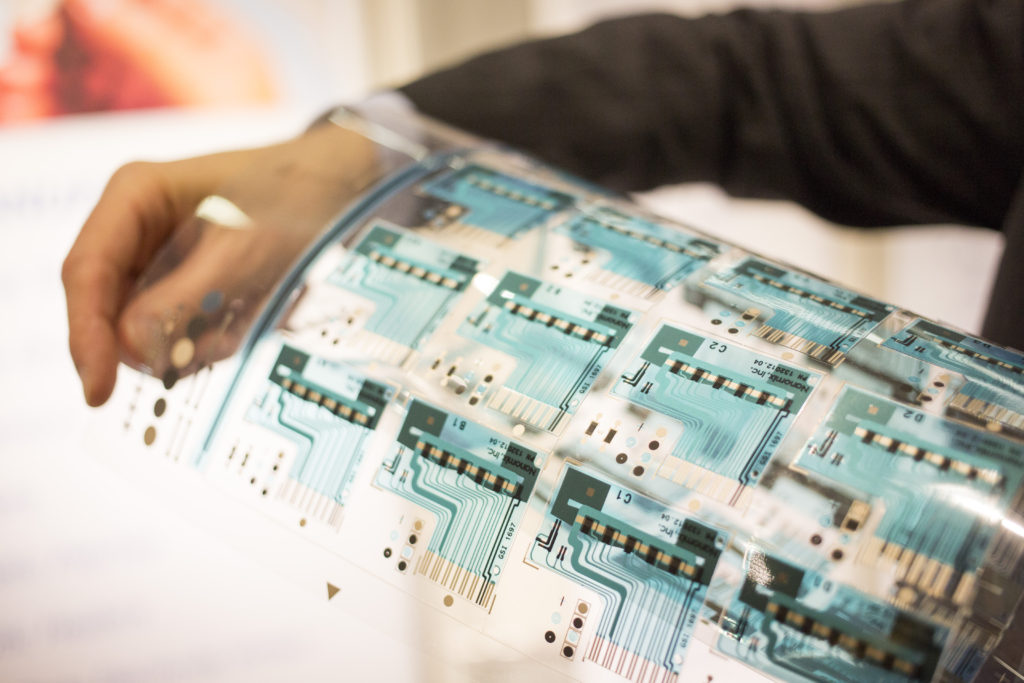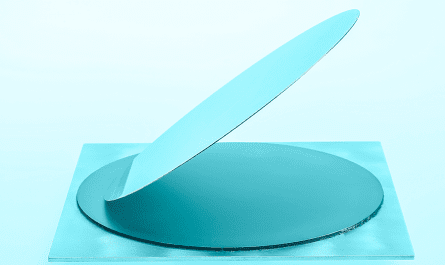Printed Electronics
Printed electronics refers to electronic devices and circuits that are created by printing different electronic components on various substrates like plastics, papers, ceramics, textiles and more. This innovative manufacturing technique enables the mass production of electronic circuits without the need for traditional silicon-based semiconductor manufacturing processes. Some key aspects of printed electronics include:
– Printed Conductive Lines: The basic building blocks are conductive lines or traces printed on substrates using various conductive inks made of metals like silver, copper or carbon. These printed lines act as interconnects between different electronic components.
– Printed Sensors: A variety of sensors can be printed including temperature sensors, humidity sensors, touch sensors, gas sensors and more. These Printed Electronics sensors are finding applications in many Internet of Things (IoT) devices.
– Printed Displays: Both small passive displays as well as large, flexible active-matrix organic light-emitting diode (AMOLED) displays can be produced using printing techniques. This enables new form factors for displays.
– Printed Photovoltaics: Solar cells and photovoltaic panels can be produced on large, flexible substrates using printing techniques like roll-to-roll manufacturing. This significantly reduces the manufacturing costs of solar energy solutions.
– Potential for Mass Customization: The digital, non-contact nature of printed electronics allows for on-demand customization and mass production which is not possible with traditional chip-based electronics manufacturing.
Applications and Benefits of Printed Electronics
Printed electronics offer tremendous opportunities for applications across many industries due to their advantages over conventional silicon-based electronics. Some key application areas include:
– Flexible Displays: As mentioned before, printed electronics enables the mass production of large, flexible displays and screens for applications in smartphones, tablets, laptops, advertising etc. The lightweight, durable nature of printed displays enables new form factors.
– Wearables and Smart Textiles: Devices like smartwatches, fitness trackers and other wearable gadgets can be produced at much lower costs by directly printing electronics on flexible, washable textiles. This allows integrating technology into clothing.
– Internet of Things (IoT) Devices: Low-cost sensors and flexible printed circuits allow embedding intelligence into everyday objects for IoT and smart home applications. Examples include smart packaging, augmented reality devices etc.
– Medical Electronics: Applications like heartbeat sensors, drug delivery patches, diagnostic tools utilizing low-cost printed technologies are being developed for healthcare and medical industries.
– Photovoltaics: As mentioned before, printed solar panels offer significantly lower manufacturing costs compared to silicon solar cells. This will accelerate the adoption of solar energy globally.
– Low-Cost Electronics: Printed circuit boards (PCBs), RFID tags and other basic electronic components can be printed at fractional costs compared to traditional manufacturing techniques. This enables new opportunities for low-cost electronics.
Printed transistors represent the core building blocks that make digital applications possible with printed electronics. Significant progress has been made in printing organic and inorganic thin-film transistors (TFTs) that meet the performance requirements for applications.
Emerging Printed Transistor Technologies
Some important transistor technologies being researched for printed electronics include:
– Organic Thin-Film Transistors (OTFTs): Made from organic semiconducting polymers, OTFTs offer flexibility but their performance currently lags behind other alternatives.
– Oxide Semiconductor Thin-Film Transistors (OS TFTs): Made from materials like zinc oxide or indium gallium zinc oxide, OS TFTs offer high field-effect mobility and production cost advantages over OTFTs.
– Graphene Thin-Film Transistors: Graphene has emerged as a promising channel material for printed flexible TFTs due to its high mobility. However, scalable manufacturing is yet to be established.
– Quantum Dot Thin-Film Transistors: Also known as colloidal quantum dot transistors, these utilize solution-processable quantum dots as the semiconducting channel for printing low-cost transistors.
– Two-Dimensional Materials Transistors: Transition metal dichalcogenides like molybdenum disulfide show potential as channel materials for flexible and printable transistors with performances rivaling silicon.
The performance gap between organic and inorganic printed transistors is narrowing thanks to novel material formulations and printing optimizations. Future advances will enable new classes of fully printed electronic systems and circuits.
Mass Production Technologies for Printed Electronics
Achieving mass manufacturing is key to the commercialization of printed electronics. Some important printing technologies being adopted for volume production include:
– Inkjet Printing: Used for printing conductive inks, dielectrics and organic semiconductors. Drop-on-demand and continuous inkjet systems enable digital, non-contact printing essential for complex circuits.
– Screen Printing: Well suited for printing metallic tracks due to its higher ink volumes and resolutions down to 30 microns. Led the earlier commercialization of printed electronics.
– Flexographic Printing: Suitable for higher throughput printing on roll-to-roll lines for applications like energy harvesting cells and displays. Resolutions around 50 microns allow basic circuits.
– Aerosol Jet Printing: A non-contact direct write method ideal for printing narrow conductive tracks less than 30 microns wide. Useful for fine pitch interconnections.
– Gravure Printing: Used for volume printing of conductive paths and transparent electrodes for displays. Can print resolutions down to 20 microns at very high speeds.
– 3D Printing: Emerging methods like aerosol jet 3D printing and extrusion printing allow fully 3D integrated printed components opening new opportunities.
Major players have established pilot and commercial scale production lines using the above flexible, Scalable digital printing methods geared for high-volume output of tomorrow’s printed electronics.
Challenges and Future Outlook
While great progress has been made, some challenges remaining to be overcome include:
– Further improvements in printing resolution and registration accuracy for complex circuits. 10 micron resolution is a key target.
– High performance and stable electronic materials optimized for printing processes rather than vacuum deposition.
– Developing fully printed active matrix backplanes for displays to replace some steps of vacuum processing.
– Scale-up of printed perovskite and quantum dot photovoltaics with long-term stability for real-world adoption.
– Cross-functional material ink development leveraging nanotechnology, chemistry and manufacturing expertise.
Once these challenges are addressed, it is expected that in the next 5–10 years fully printed smartphones, wearables and smart labels using printed batteries, chips and displays will emerge commercially. The future of electronics engineering is shifting from silicon cleanrooms towards digital printing presses as printed electronics transform technology manufacturing.
*Note:
1. Source: Coherent Market Insights, Public sources, Desk research
2. We have leveraged AI tools to mine information and compile it




